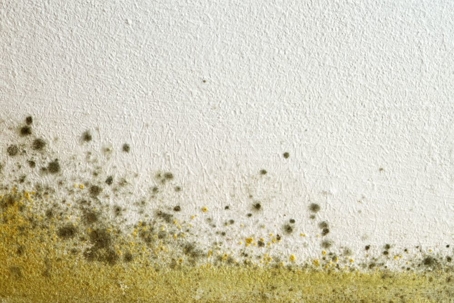9 Types Of Mold That Can Be Found In Your Air Ducts
One of the bigger problems that homeowners tend to face when it comes to the overall maintenance of homes is the problem of mold. This substance is not only hard to look at, but can also be incredibly dangerous for anyone living in these spaces. Because of the nature of mold, it can be harder to spot at the beginning and is something that tends to grow over time if not taken care of at the earliest.
Generally, mold is known to grow in damp and dark places, and in areas with lower temperatures as compared to the rest of your home. Mold can occur in any part of your home, or even in your general home appliances if not tended to appropriately.
One of the more common places that serve as a spawning ground for mold is air conditioners, particularly, the vents and ducts that help the airflow to different parts of a home. Because of the nature of air conditioners, it is incredibly easy for mold to grow rapidly, becoming rather hard for the homeowner to deal with themselves. Air conditioners tend to have a high amount of moisture and generally remain damp on a regular basis.
The temperatures inside these are also significantly lower as compared to the rest of the home, providing the ideal temperature for mold to grow and spread.
To be able to properly take care of the problem of mold in your air ducts, it is essential to know the different types of mold that can present themselves, and the look of each of these specific types. The following are some of the more commonly occurring types of mold that are found in air ducts and vents.
1. Acremonium
Acremonium is a toxigenic mold that tends to grow over time, taking on an appearance of a white powdery substance. This is one of the more common types of mold that can grow in damp and wet places or areas with water contact.
2. Alternaria
Alternaria is one of the most commonly found types of mold and appears as a greenish or brownish velvet-like texture. This is one type of mold that can grow in any area that tends to have water running through for a significant amount of time, which is why it is rarer to find these in air ducts and vents.
3. Aspergillus
Aspergillus is one of the harder types of mold to distinguish because of the varied forms that it can take on. There are several colors that this type of mold can appear in, more commonly in green, white or yellow.
4. Chaetomium
Chaetomium appears as a brown substance with cotton-like texture. This is one mold whose color tends to change over time, making it harder to distinguish or identify. This type of molds is most commonly seen growing on walls, but can also appear in air ducts and vents.
5. Fusarium
Fusarium is another type of mold that tends to grow mainly on walls and other surfaces that have been damaged by water but can also have certain appearances in air ducts if there has been any water damage caused to them.
6. Mucor
Mucor is one of the most commonly occurring types of mold that is found in air conditioners and air vents and is something that needs to be treated at the earliest because of the potential threat that it holds.
7. Stachybotrys
Stachybotrys is one of the more common types of mold found in households and takes on the appearance of a blackish substance that spreads rapidly over time. This kind of mold is incredibly easy to spot, but still is one of the more toxic kinds that can appear in your air vents and ducts.
8. Trichoderma
Trichoderma is one kind of mold that can only grow in spaces that are constantly wet or moist, which is why their appearance in air vents is incredibly common. This type of mold looks like spores and can multiply rapidly, thereby leaving a very persistent threat in your home.
9. Ulocladium
Ulocladium is one of the last types of mold that can be found in your air vents and is much rarer as compared to the other types that exist. This kind of mold is most commonly seen growing in the corners of bathrooms and kitchens and looks like a layered black substance that appears in these parts. This is also one of the hardest types of mold to get rid of, which is why a professional is always required for this.
Because of the dangers that are prevalent when one is exposed to any kind of mold, it becomes incredibly important to conduct Fresh Aire Duct Cleaning on a regular basis. Professional companies that can conduct this kind of Fresh Aire Duct Cleaning are generally the best to approach since they are more equipped to identify and deal with the problems of mold in a much more efficient manner.

